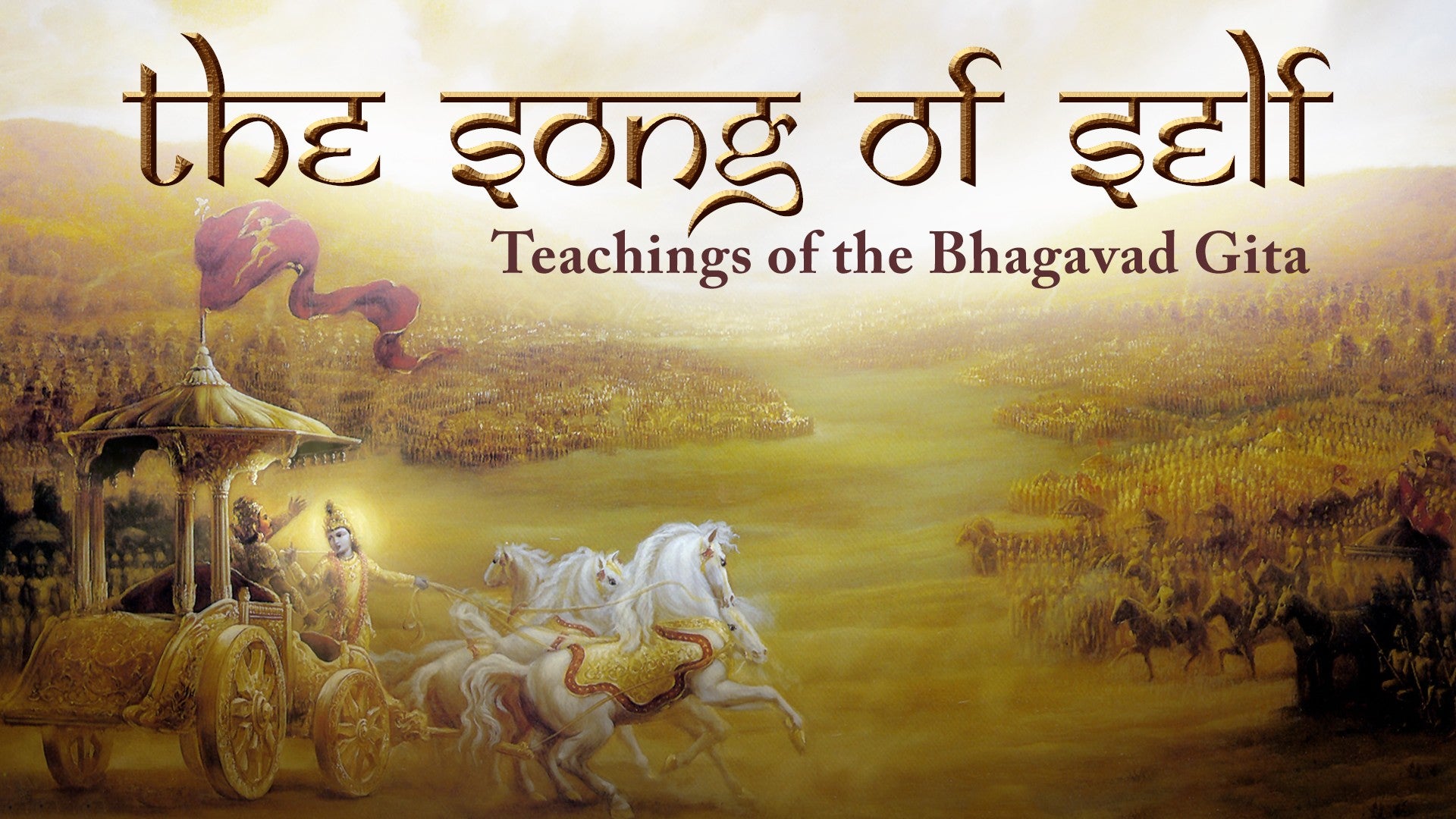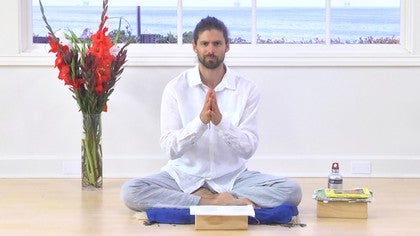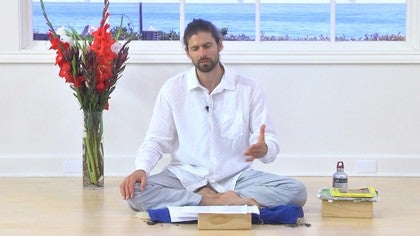Description
We have attached the Sanskrit Alphabet PDF for you to follow along with us.
About This Video
Transcript
Read Full Transcript
So, before we go into recitation, there's one other thing I'd like to highlight and just give a little bit more attention to before we do that and that is the use of the visarga or the way we pronounce this visarga sound. So, you may recall that the visarga is indicated in the Roman transliteration by the H with a dot at the end of a sound, at the end of a word, at the end of a line perhaps. Now the visarga, you may remember we said um for anusvara and uh-huh, but we mentioned that they do behave a little bit differently in different situations. So, if for example we had an uh before the H at the end of a line, it would be uh-huh. And this is one of the ways it will commonly behave.
There will be a slight echo of the preceding vowel sound. However, there are a couple of instances where it behaves differently and we will encounter these in the second chapter. Now the first thing is basically once upon a time before certain grammatical transactions were carried out upon the various sounds of the Sanskrit words, this visarga was pretty much like a sibilant sound. This is something of a simplification, but Sanskrit words, they're subject to many kind of processes in the way that they get formed. So this visarga, the H with a dot, it has, we can state it like this for simplicity's sake, a lot in common with an s or a sibilant sound.
So if you see, for example, H with a dot followed by sh, sh or sa, then the H with a dot mimics the sibilant sound which follows it. So for example, on namashivaya, at the end of the word namaha, we have this sound, aha. But then we have a sh, so we don't say on namahashivaya, we say on namashivaya, just like it's two sh sounds together. So this is one kind of special way the visarga will behave. When you see the H before any of these sibilant sounds, sh, sh or sa, you'll just voice it like the sibilant sound which follows.
Another special case is if the visarga is followed by k or k. Now to give an example of this, you can look at the sixth verse of the second chapter. And in the sixth verse, the second chapter, in the first quarter of that verse, you'll see there is nacaitadvidhma kataranogariyo, again, nacaitadvidhma kataranogariyo. So it's almost like you draw in the breath ever so slightly, nacaitadvidhma kataranogariyo. Maybe you can hear that.
It's like vidma, like a little bit of expulsion of air, to repair the mouth for the k sound which you'd make in the guttural area. So one more time, nacaitadvidhma kataranogariyo. And this will become much clearer in the context of the verses. Another special case is when the visarga is followed by a p or p sound. And we can see an example of that.
We can see a few examples of this in chapter two. And the first is in the third verse, also in the first line. Klaibhiyamma smagamafparata, once more, klaibhiyamma smagamafparata. So when it's before a p, it's like we almost make this f sound, a bit like an f. Once more, klaibhiyamma smagamafparata.
And this just helps us prepare the mouth to make the p sound after the h with a dot. And in both these instances, before the k and the p, that special sound of the f before the p or the kind of expulsion of air before the k, it lets the listener know without any doubt that the visarga was present. Because if we don't make that sound, we might lose it. We might not be able to actually distinguish whether the visarga is there or not. And so all of these things, all of these rules, they are in place to ensure that the listener can understand each sound that is included in the verse.
And grammatically, and then in terms of the meaning, this is a vital significance. Because for example, if we say, for example, you can see in the first verse, the last word is madhusudana hah, and it's the name of Krishna with visarga at the end. So the last word of chapter two, verse one, madhusudana hah. And this means Krishna, the conqueror of the demon Madhu, and it's what they call the nominative case. Krishna is the subject of this phrase or this sentence.
But later, Arjuna, in the fourth verse, he's asking Krishna, he's addressing him. And so you can see at the end of the first line of the fourth verse, we have the same name, madhusudana, but there's no visarga. And this is Arjuna addressing Krishna. Krishna is not the subject of the sentence here, he's just asking for his attention. This is just one example of how the meaning changes.
So these rules and the particular pronunciations, they're just to make it easy for the listener to understand exactly what's being said. And also, they help us keep this rhythm of the recitation and enjoy that kind of beautiful cadence even more fully. And they say that when you recite, the way you recite actually helps install the teaching into yourselves more fully. So when you voice the verses, they have a vibratory quality, and the clearer we can pronounce, the more we'll be able to enjoy that. So I hope that's clear enough, and I am confident that once you start exploring the verses and practicing them, it will make a lot more sense in context.
So from here, we'll continue with the call and response recitation section.
The Song of Self: Let's Recite
Comments
You need to be a subscriber to post a comment.
Please Log In or Create an Account to start your free trial.













